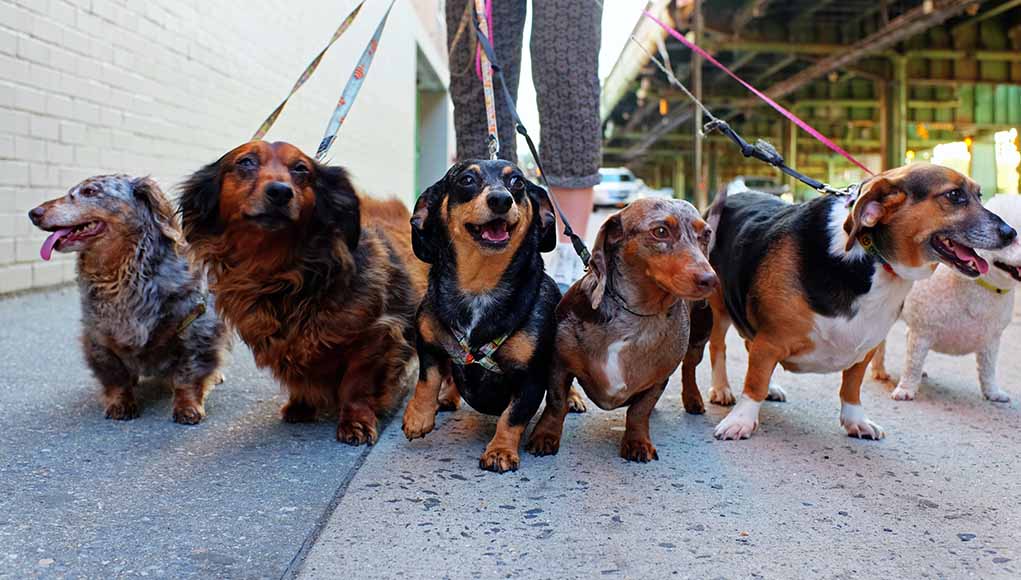Collar or harness for your dog, which is better, what are the advantages and disadvantages? What are the dangers of making the wrong choice!
From my point of view, the information below is a must for anyone who lives with a dog. I hope you find it useful. Nowadays, it is possible to find both collars and harnesses for dogs in any pet store. Both in physical establishments and in specialized online stores, the offer is usually wide. However, before choosing, you should be well informed.
The collar is the most popular choice among dog owners compared to the harness. However, more veterinarians are recommending against its use. The neck is a very sensitive part of the canine anatomy. As with people, a single whiplash accident can be very damaging.
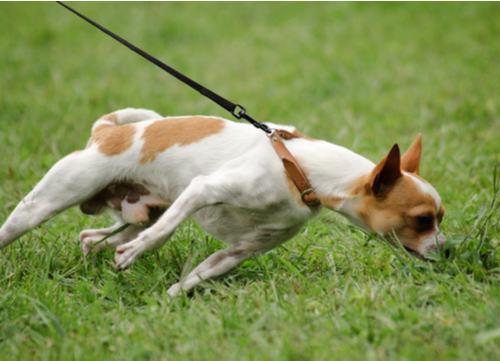
Excessive pressure of a collar on the neck may involve the following risks:
Pain, contusions and/or contractures.
The neck concentrates part of the musculature that affects the correct movement of the rest of the dog's body.
In addition, the neck houses an important portion of the spinal cord, responsible for communicating the brain with the body and for controlling, among other functions, the animal's movements and its sympathetic and parasympathetic nervous system.
Any abnormal tension in the vertebrae covering the spinal cord can lead to impingement, cause pain or even compromise the dog's neurological functions.
Impaired blood supply and related problems
On the other hand, the pressure exerted by a collar on the neck can interfere with proper blood circulation. A deficient cerebral irrigation can have serious consequences on our dog's health. Some experts point out that it can cause an increase in intraocular pressure and damage the optic nerve (glaucoma), affecting the animal's vision.
Respiratory Difficulties
The trachea, larynx and esophagus are located in the dog's neck. Excessive pressure on them can lead to respiratory problems and choking.
Thyroid Involvement
The thyroid is a butterfly-shaped gland located in the neck. It is one of the endocrine glands that produce hormones. Thyroid hormones control the rhythm of many activities in the body: body temperature, heart and respiratory rate, cell growth, etc.
If the thyroid gland is affected, this can negatively influence the dog's metabolism.
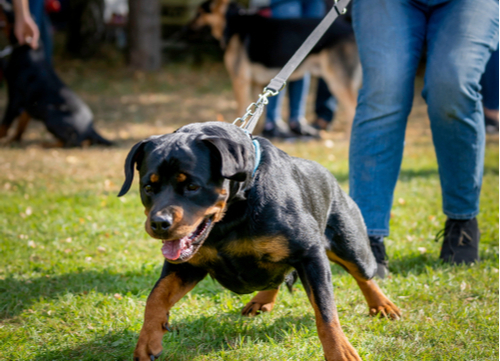
DANGERS OF THE COLLAR VERSUS ADVANTAGES OF THE DOG HARNESS
The Advantages of a Dog Harness
Using a dog harness instead of a collar ensures that the pressure (mild or severe) that the dog exerts when pulling on the leash is not concentrated on the neck. This avoids the risks described above. However, it is worthwhile to be very clear about how a harness has to be in order to be comfortable and safe.
The Disadvantages of a Dog Harness
There is an open debate among ethologists and dog educators as to whether a dog pulls more on the leash when wearing a harness than a collar.
Although there is no scientific data to corroborate one opinion or the other, I personally believe that a dog wearing a harness feels less discomfort when pulling on the leash than a dog wearing a collar and, therefore, can pull harder.
However, given the risks of the collar, it must be clear that the priority in these situations is to teach the dog not to pull on the leash. The main thing is to solve the problem. As always, the best thing to do is to ask for professional help.
HARNESS FOR DOGS THAT PULL ON THE LEASH
As a punctual support while working on obedience during walks, there are educational harnesses or anti-pulling harnesses, which can be a very good option. They are those whose purpose is to help teach the animal not to pull the leash.
Nose Harnesses
The first educational harnesses that existed (and are still marketed) were attached to the dog's muzzle, so that every time he pulled, the harness made him turn his head. But this method has many detractors because a misuse of the tool by the owner can lead to serious cervical injuries. In addition, the so-called “nose halter” is annoying and too invasive for the dog.
Halti Harnesses, a Good Option
Educational Halti type harnesses have an anterior ring (chest area) for the leash, so that every time the dog pulls, the animal receives a force that pulls its undercarriage to one side, causing slight discomfort and changing the direction of its gait to the side.
This method is considered much less uncomfortable for the dog. Personally, we think it is a very useful tool. Moreover, it is the alternative to other widely used and not at all recommended ones such as choke or prong collars.
Even so, there is an interesting open debate about the implications that educational harnesses of this type can have on the dog's musculoskeletal health.
Snub-Nosed Dogs
Pugs, Bulldogs, Boxers, etc. This type of dog breeds (brachycephalic dogs) have shortened airways due to the characteristics of their facial anatomy. That is why they usually present respiratory problems. In these cases, our advice is the undisputed use of the dog harness instead of the collar.
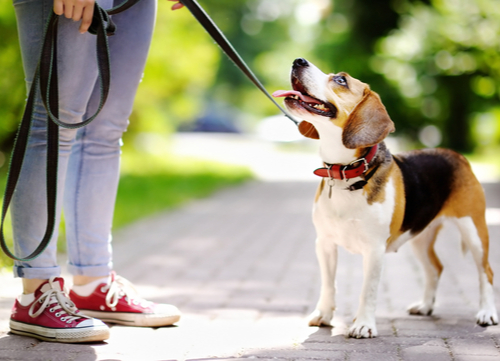
Collar or Harness
This decision is made by many dog owners without giving it too much thought. Some prefer the collar, because it is quick to put on, others prefer the harness, because you can attach to it, for example, funny stickers such as “Mom's Best”. It is important for the health of your dog to find out about the advantages and disadvantages of both methods, and then decide whether a collar or harness is the right choice for you and your dog.
Collar for Dogs
The neck of any living creature is quite sensitive. Here the spine is only little protected, here lies the windpipe that supplies the lungs with the vital oxygen and also the hormone-producing thyroid gland is surrounded here by only little tissue. In addition, the individual neck vertebrae are very fine here – and anyone who has ever had their neck “twisted” knows how much the whole body's movement is restricted when something is out of balance there. Many people can't even stand the tightness of a turtleneck – but that's exactly the part of the body where we attach a dog collar.
In principle, this is not a problem as long as there is no pressure on the neck. But any strong jerk on the collar, whether you exert it because you pull on the leash, or your dog exerts it because he runs into the leash with all his might from excitement or in play, poses health risks, and the consequences of an inflamed larynx as a result can be coughing and choking. And highly painful damage to the cervical spine can manifest itself in the animal holding its head crooked or swaying. Even increased eye pressure can be the result of permanent pulling on the collar.
When To Use A Collar
- Your dog is only briefly led on the leash across the street or around the block, so that he can then run freely.
- The dog is really very calm and walks evenly on the leash. This is often the case with senior dogs, very well leashed or balanced dogs.
- During dog school and training, the dog is concentrated and looks ahead.
When Not To Use A Collar
- The dog tends to be leash aggressive, walks on a drag line or walks next to a bicycle or a horse.
- The dog is very young and still very playful or fearful.
In these cases, the risk is simply great that your four-legged friend will run into the leash with a lot of momentum and injure the sensitive neck region or get tangled and strangled.
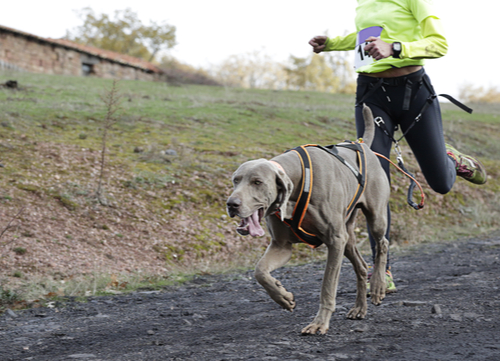
HARNESS FOR DOGS
The advantage of a harness over a collar is that it distributes pressure evenly – sparing the neck region. However, there are also some things to consider here, because a chest harness that does not fit properly can also cause damage to the dog's health. Therefore, a harness must fit perfectly.
- The harness must not be too tight and especially not press from above on the sensitive spine region.
- The chest strap must rest against the body, a hand's width away from the front legs in large dogs, and correspondingly a little less in small breeds. It is important that nothing chafes in the armpit.
- The rotation of the shoulder must not be disturbed. So, there should be no strap over the shoulder blades.
- The straps should be soft and wide.
- If the harness has a metal ring in the chest area, through which the straps run, then it should not press on the sternum bone.
Advantages of a Harness
- The pressure is distributed over the entire front part of the body.
- If the dog gets into an unsafe situation, for example in rough terrain, he can be pulled up or out by the harness.
- A fearful dog is better secured by a harness, while from a collar he can quickly squirm out.

Collar or Harness? Which is Better for Your Dog!
Get advice at the store so that you buy a harness that really fits and does not chafe or pinch. Try out the different fits that are available. Maybe you can ask your friends from the dog park, who have a dog with a similar body type, to try out their harness for a day. This will give you the opportunity to test several models for their everyday suitability and eventually find your favorite.
Regardless of whether you prefer a collar or a harness, the most important goal should always be good leash control and controllability of the dog. Because this way the harmful pressure that the body has to endure is minimized as much as possible.

Frequently Asked Questions (FAQs)
Which is better dog leash or harness?
A harness allows you a much better grip and is also easier to control with arms and back when you have a strong or very large dog. Quite small dogs can be vulnerable to leash injury or tugging. A brace scatters pressure over a greater part of your body that reduces tension on your neck and back.
Why are harnesses bad for dogs?
Studies have shown with dogs wearing straps that their weight starts to move to the rear end so that they don't have too much strain on the front. This finding informs us that the inconvenience in a brace is sufficient to adjust the stance.
Should dogs wear a harness all the time?
Usually, a brace is not as convenient for daily use. Often, it could be caught into a brace if your dog has long hair. But a collar will increase the risk of neck injury for dogs who pull hard during walks. In these situations, a brace may be the best choice.
Do dogs pull more with a harness?
Have you ever noticed how dogs pull a lot with their leashes on their necks? In fact, tightening up the leash causes the dog to tense the neck. You're pulling on one way, pulling on the other. Contrary to common opinion, it won't drag the dog in a leash.
Can a dog wear a collar and a harness at the same time?
Dogs will simultaneously wear a harness and collar. Identification tags must mainly be applied to the neck. Harnesses should only be left on until the dog goes around, and neck collars should be left on until the dog is supervised and interacts with another dog.
Final Thoughts
Puppies chew through harnesses in few minutes with their pointed teeth – this can be expensive fun in the long run. So don't put the harness on until just before you go for a walk – and also pay attention to what your little one is doing when, for example, he lies down next to you in the park and takes a rest. They could be snacking on it!
Read Next: How To Make A Dog Harness



